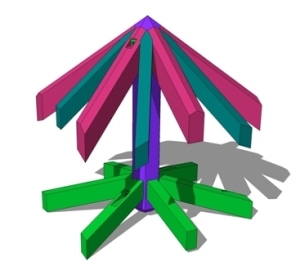 Just the housings and rafters to cut this boss pin detail would certainly challenge any timber framer. The central post is typically called a boss pin, and it is used when you have several hips and valleys coming together at the same spot. This detail comes from a hexagonal frame, and has the lower struts diving into the boss pin as well.
Just the housings and rafters to cut this boss pin detail would certainly challenge any timber framer. The central post is typically called a boss pin, and it is used when you have several hips and valleys coming together at the same spot. This detail comes from a hexagonal frame, and has the lower struts diving into the boss pin as well.
Since this joint cannot be pegged, it is common to use structural screws and a piece of all thread to resist the loads that are placed upon it.
Shopping Cart
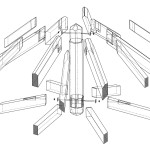
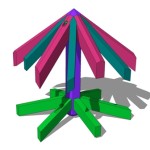
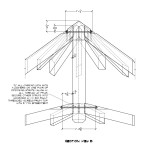
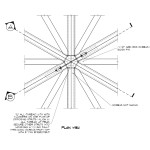
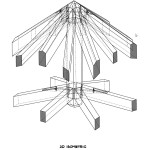
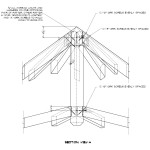
Very cool!
Thanks Will.
Brice
Do you have any images showing true joinery for a boss pin?
Thanks!
Nathan,
Not yet this particular frame is currently in production. I hope to have some photos of it soon.
Brice
Hey Brice! You say this cannot be pegged and so therefore it is common that “structural screws and a piece of all thread” are used in order “to resist the loads that are placed upon it” but since there are only two of the rafters (opposite to one another) that are secured with a screw then why couldn’t this be achieved using a long wooden pin? Or even better, a free tenon that are then pegged with two or even three pegs in each rafter?
The rafter to boss pin connection is in tension in some cases and so as in this case, all thread is used to resist those sustained loads. A structural screw because of the threads can be used in some applications to withstand the tension but not all. I am a big believer in using pegs to hold everything together but there are times where steel and screws make more sense from a long-term durability standpoint. In my opinion, this is one of them.